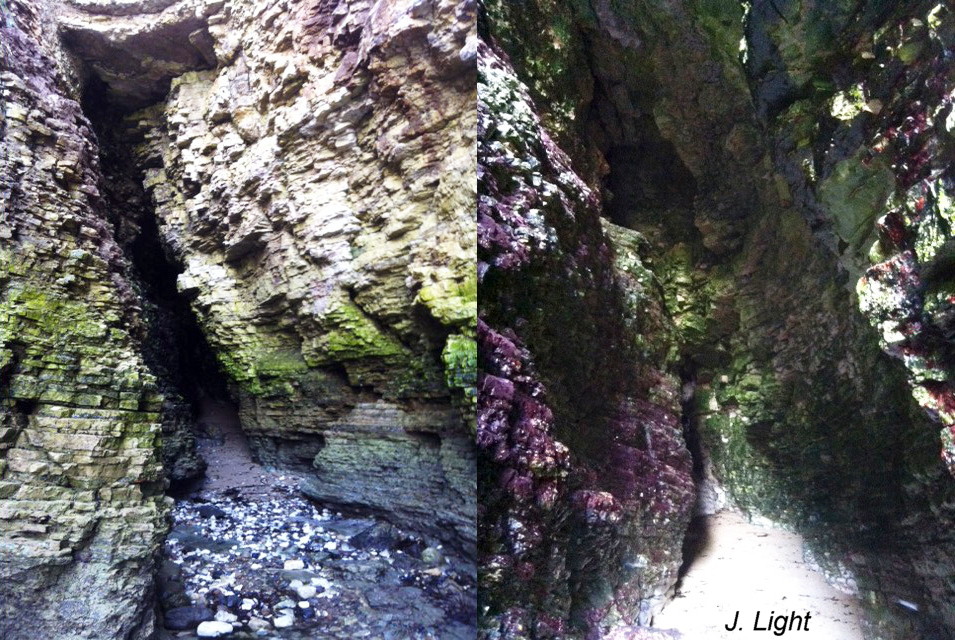Left: exterior of cave in highly fissured chalk.
Right: dark interior, image brightened to show detail.
Cave narrow and confined so humid and shaded; several Otina ovata on shaded, damp, right-hand side of cave with green filamentous algae.
Left side of cave with reddish algae receives some direct sun; has only a few Otina ovata.
North Yorkshire, September 2014. © J. Light
Search technique “if properly searched for it would doubtless be found in every suitable locality” (Jeffreys, 1869).
Take a torch and large hand lens to help detect the tiny white glistening blobs of flesh, or, in late May and early June, the larger (4 or 5mm across) yellowish egg masses. Choose a humid misty day, if possible, as O. ovata is then more likely to emerge from cover, and visit as soon after high tide as access is possible; wellingtons or waders may help early access to caves with entrances still awash. Seek, in fissured rock, a cave or chasm that is narrow, so likely to retain humid air and exclude direct sun. Search wet and damp rock faces around high water mark; sometimes different coloured algal films indicate differences of moisture. Shaded, north-facing faces of fissured reefs may have some within crevices, but splitting them open is destructive of the habitat and should be done very sparingly, if at all. If you take specimens for study, transport them in a wet air-tight box that preserves 100% humidity. At home keep box in a fridge between 6°C and 10°C. Examination and photography can be of animal in seawater to save from dehydration, but it will become inactive and drown if kept submerged for more than a few hours.
See also 12 Otina ovata. and 13 Otina ovata.
11 Otina ovata

